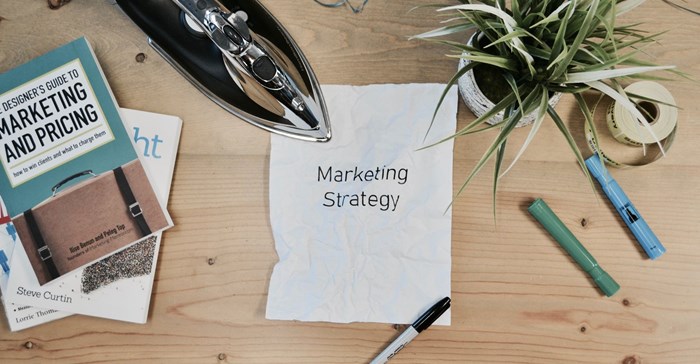
Subscribe & Follow
Jobs
- Senior Graphic Designer Johannesburg
- Sales Agent Elukwatini
- Sales Assistant Hermanus
- Sales Assistant Hermanus
- Sales Assistant Cape Town
- Festive Season Contract - Old Khaki - Johannesburg Eastrand Johannesburg
- Assistant Leader Cape Town
- Permanent Part-Time Sales Assistant - Cape Union Mart - Paarl Paarl
- Sales Assistant Kathu
- Permanent Part-Time Sales Assistant - Old Khaki - Cavendish Cape Town
Trigger the right bias in customers to give your brand an edge

Hitting customers early on can ensure that you’re already on their radar when they start considering their options—and in some cases, you could even convert them before your competitors start to target them.
This is the world of event-driven marketing, which is built on the understanding that customers don’t follow a linear path from exposure to conversion.
To succeed with this powerful marketing technique, a brand needs to master the art of data modelling and have access to the right first-party and second-party data, in addition to the data that programmatic platforms have about their audiences. When effectively harnessed, data modelling enables you to reach customers earlier in the purchase cycle with the right messaging.
Let’s take a step back and revisit some concepts I’ve written about before. There’s more to the customer journey than a funnel that starts with interest, before moving through awareness, consideration and conversion.
According to research done by Google, these phases can take months and customers can vacillate between exploration and evaluation. In other instances, the path to purchase can be quick, depending on the individual’s personal biases and sense of urgency.
Targeted purchasing
One way to help nudge customers towards a purchase is by appealing to their biases with targeted messaging. Google’s research also provides great insights into these key biases.
These triggers could, for instance appeal to the ‘power of now’ bias with a limited time offer, the ‘scarcity’ bias with messaging around limited stock or an ‘authority’ bias by getting an expert to support the offer. But to trigger the right bias, advertisers need to have data about customers and prospects that enables them to reach the audience with the right message.
Identifying the trigger for change
In addition, advertisers that use the right trigger at the most opportune moment are the ones that will have an advantage. This is where event-driven market comes into play.
We can define an ‘event’ in this instance as a change in the customer’s or prospect’s circumstances that will make them more open to purchasing a product or service, or to switching brands. Based on such an event—a pregnancy or a salary increase, for example — we could trigger a marketing message to them.
The beauty of this approach is that you can start talking to the customer before they start researching options, perhaps even before they are even consciously aware that they will need to buy a product in your category.
For example, if you can create audience segments comprised of people who have just applied for vehicle financing, you know they will need car insurance. And if your data model helps you segment people who have just received approval for a home loan, they are probably going to be interested in new furniture.
This is a fleeting window of opportunity, when the customer is receptive to relevant messaging but has yet to be bombarded with ads for car insurance or sofas wherever they go on the internet. By getting a tailored message to them at this early phase of the purchase cycle, your brand can claim a space at the top of their mind. As they start considering their options, you can address them with a re-marketing strategy to close the conversion.
Personalised marketing that complies with data privacy
Data privacy regulations like POPIA and GDPR—and consumer sensitivities around data ethics—mean brands need to tread lightly in how they approach this level of personalised marketing. But with effective data models and the right partners, you can use first-party, second-party and third-party data to create powerful customer engagements that drive conversions without annoying consumers or ignoring their rights.
In these campaigns, you could use anonymised data from your CRM systems, and from data partners to create ad campaigns on platforms like Google and Facebook, which offer secure application programming interfaces (APIs) to create custom segments of hashed data. You will be able to access the audience lists, but no personal information can be extracted from the platforms. This addresses privacy concerns while delivering accurate audience targeting.
Your prospects and customers will then see targeted ads across Facebook, Google Display Network or relevant social media channels, which is far less invasive than direct marketing text messages or emails. After all, they expect to see banners and ads when using free access websites or social media platforms. Despite it not being direct marketing, you should nonetheless ensure that the data is POPIA compliant and customers have opted in for marketing communications.
If your company has a large base of opt-in customers and access to other compliant data sources, you can create dynamic audience segment lists that are automatically populated in the ad platforms you use for event-triggered marketing. With the right data modelling partners, you can watch for circumstance-changing events and take your marketing to a whole new level by reaching customers in the precious window of opportunity before they start actively looking for a product or service.
Related
#BizTrends2025: Grant Lapping | 3 trends dominating search: GEO, social search and voice Grant Lapping 5 Feb 2025 What you need to know about the new direct marketing guidance note Nadine Mather and Chloë Loubser 11 Dec 2024 Assegai Awards 2024: Celebrating South Africa’s finest in integrated and direct marketingDMASA 15 Nov 2024 Washington Post faces backlash as Bezos ends presidential endorsements to restore trust 30 Oct 2024 New research shows SMS is not long for this world Lindsey Schutters 15 Oct 2024 Assegai Awards 2024: Why enter?DMASA 8 May 2024 The rise of retail media in marketing strategiesTractor Outdoor 8 May 2024 6 tips to help scale up your small business Grant Lapping 29 Apr 2024













